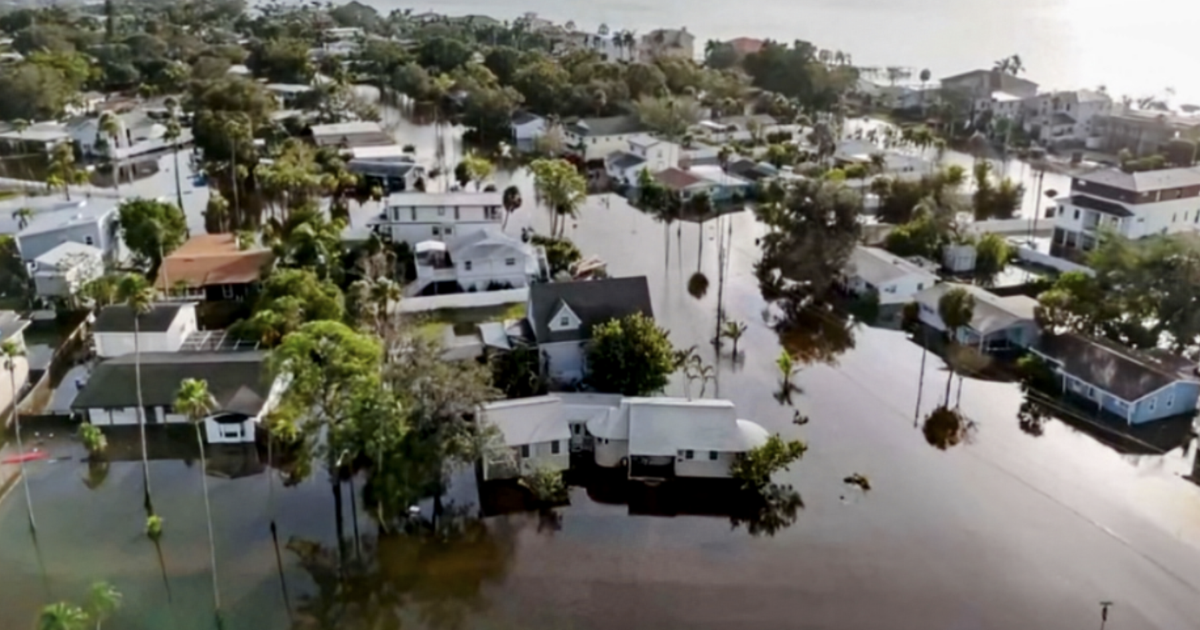St. Petersburg administrators believe installing two flood gates in Shore Acres, the city’s lowest-lying neighborhood, will benefit multiple areas along an interconnected stormwater system.
Councilmember Mike Harting said the project, which would mitigate tidal and storm surge impacts, involves “damn near a quarter of the entire city.” He and his colleagues unanimously approved a $147,451 contract with Jacobs Engineering Group at their Sept. 24 meeting to analyze designs, locations, benefits and risks.
The city could operate its first flood gates, similar to those used in New Orleans, remotely or rely on sensors. Harting said Mother Nature has “decided she was going to do different things, and we’re able to accommodate that on such a mass scale.”
“This will bring relief to just a phenomenal amount of people,” he added.
Brejesh Prayman, engineering and capital improvements director, called the project an example of the city innovating and “thinking outside the box.” Officials have identified bridges along Canal #7, at 46th Avenue and Bayou Grande Boulevard Northeast, as potential locations for the flood gates.
Dallas-based Jacobs will also analyze two alternative locations in the same area. The city is currently designing a new Overlook Bridge at Smacks Bayou and wants to ensure the structure can potentially accommodate a flood gate.
Prayman stressed that the project would benefit “all the communities in that region.” He said channels along 54th and 45th Avenues North act as interstates that carry stormwater from as far west as 16th Street through Shore Acres to Tampa Bay.
Impacted neighborhoods include Edgemoor, Placido Bayou, Euclid Heights, Harris Park, Allendale and parts of Northeast Park, Magnolia Heights and Snell Isle. Prayman noted that most of those communities flooded from Hurricane Helene’s storm surge and Hurricane Milton’s historic rainfall.
“For each six inches of that waterbody, we’re talking about 52 million gallons of storage capacity,” Prayman said. “So, if during a major rain event, a storm, we see an impact of surge, we can close that gate. Our stormwater system can operate, but we don’t have that surge impact … (putting) our residents at risk of flooding as far west as these locations.”
Jacobs will help the city determine an appropriate width for the flood gates. Officials also want to ensure the project does not negatively affect water quality.
Councilmember Brandi Gabbard noted that 95% of her district in Northeast St. Petersburg sits within a coastal high-hazard area. Many residents contacted her with concerns about the city “prioritizing one neighborhood over another” following a previous article that emphasized Shore Acres.
“We talk about being able to hold back water,” said Gabbard, who supports the study. “Well, water finds a way. Water is always going to have to dissipate somewhere else.”
Prayman said the current concept “may not be the final solution.” Administrators “don’t want to push the problem from one spot to another. That’s key.”
Jacobs has provided professional services for stormwater improvement projects since September 2023. Documents state that the company has a “deep familiarity” with the city’s plans and assets.
Gabbard said residents, many of whom participated in community outreach programs, have also questioned when the city will release at least some aspects of the Resilient St. Pete Action Plan. Officials first discussed the initiative, which will help them prepare for a worst-case scenario “decades into the future,” in September 2024.
“We were supposed to have had a deliverable by now,” Gabbard said. “Unfortunately, there were some staffing changes at Jacobs, which I think might have slowed things down a little bit.”
Public Works Administrator Claude Tankersley said the city would provide the results in a “little bit of an unusual way.” A dedicated website will feature a “story map” with aerial photographs, neighborhood concerns and conceptual flooding solutions.
“It’ll be an interactive type of process,” Tankersley added. “I know staff is working on that … and I know that they’ve made good progress on it.”
He hopes to review the story map in October. Gabbard said the city needs to release the plan to garner additional public feedback and ensure residents “feel included in these decisions.”
She also questioned whether the U.S. Army Corps of Engineers, which has “handicapped” dredging projects in her district, would also impede the flood gate initiative. Prayman said Jacobs will help address permitting and regulatory requirements.
“I think it’s really important for residents to understand that just because we vote to even study it today, does not mean that it will happen,” Gabbard said. “It does not mean it will happen in the way that people believe it might happen.
“Because we are a coastal community, we are never going to keep all the water out of our city. We all have to learn to adapt and get really prepared for the future, which is living with this water.”
This content provided in partnership with stpetecatalyst.com.

